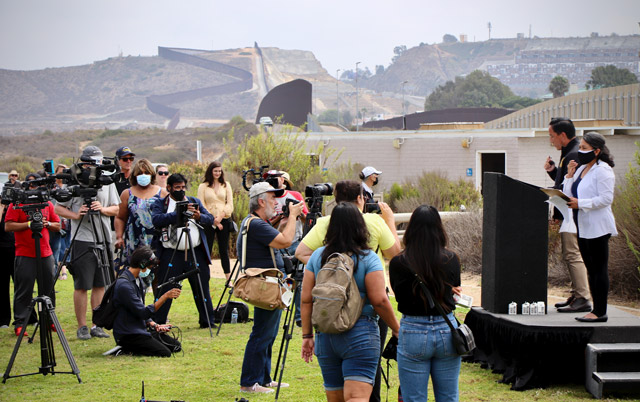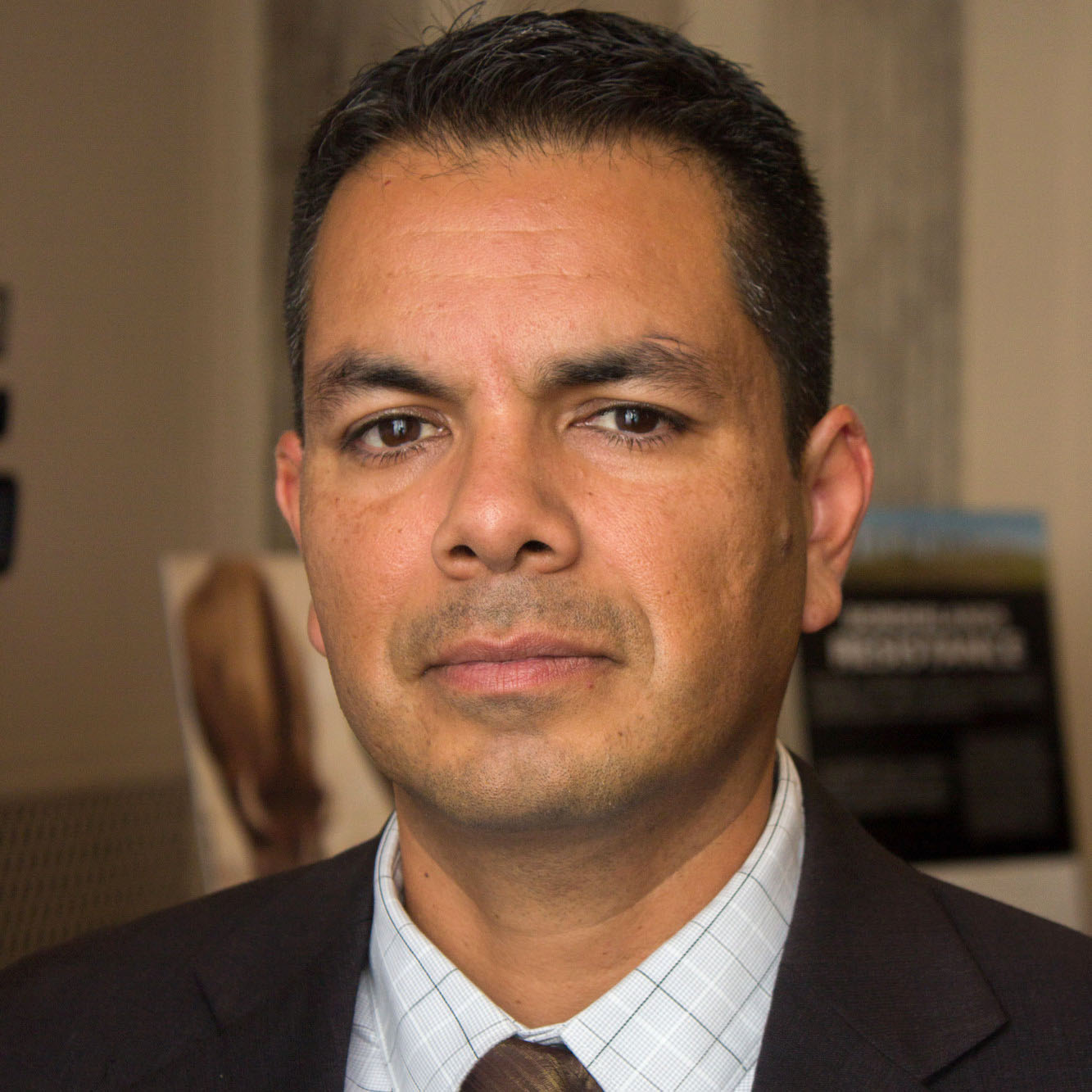
On Aug. 22, elected officials, partners, community members, and organizations from both sides of the U.S.-Mexico border commemorated the 50th anniversary of International Friendship Park. Pedro Rios / AFSC
On Aug. 18, 1971—just over 50 years ago—First Lady Pat Nixon visited Border Field State Park in San Diego, California to inaugurate the site. Being bothered by the cables separating the United States and Mexico, she remarked, “I hope there won’t be a fence too long here.”
She crossed into Mexico to greet the audience that had gathered in Tijuana, at the western edge of the U.S.-Mexico border. This location within Border Field State Park became known as Friendship Park.
Today, the Border Patrol’s heavy enforcement footprint that now covers the area is the opposite of Pat Nixon’s vision for the international park. Over the past two decades, Border Patrol officials and members of Congress have successfully lobbied for increased control measures at Friendship Park that have included double-layered 18-foot-tall border walls, infrared cameras and high-powered radars, as well as the 24-hour presence of Border Patrol agents, patrolling in their vehicles by air and sea.

Despite the militarization of Friendship Park, thousands of people have visited the park over the years. Many are families who have been separated by inhumane U.S. immigration policies. The space between the primary and the secondary border walls has offered them a unique opportunity to see each other, albeit with the primary border wall dividing them. These are the reunions, between family members and friends, that make Friendship Park a sacred space. It is why public access to Friendship Park is a priority for the Friends of Friendship Park, a coalition of individuals and organizations, including AFSC, that for 15 years has maintained a consistent presence at the historic site, holding events and activities drawing attention to the site nearly every weekend.
During the week of the park’s 50th anniversary, the Friends of Friendship Park Coalition organized a series of in-person and virtual events that included photography exhibitions, workshops, and a film screening with original footage from Pat Nixon’s visit in 1971. An important thread in the events was the presentation of the Build That Park! conceptual design to make Friendship Park truly international. The conceptual design took Pat Nixon’s vision and reimagined Friendship Park as a place of binational encounter. It was the culmination of a campaign that invited submissions from around the world, centering “friendship and cooperation” as a path for true security for all. The conceptual design includes a pier, a courtyard for free speech, a seaside boardwalk, and incorporates existing historic structures—such as the Tijuana bullring—to retain the unique identity of the surrounding communities.
The Build That Park! campaign also reframes the conversation about what type of experience visitors should have when visiting this corner of the U.S.-Mexico border. Where Border Patrol officials would rather have Friendship Park inaccessible to the public, the Friends of Friendship Park members counter that a visit to the park should be unencumbered by border surveillance and overzealous enforcement.
Our reality today is that the Border Patrol’s San Diego Sector has kept Friendship Park closed since February 2020. Initially they closed public access to the enforcement area when California State Parks closed Border Field State Park, citing concerns over the COVID-19 pandemic. At the time, Border Patrol officials stated they would reopen the park when State Parks reopened Border Field State Park. But when State Parks opened the area, Border Patrol officials said they didn’t have enough staff to station at the entry of the enforcement zone for weekend hours, claiming their agents were overwhelmed with apprehending migrants entering between ports of entry.
Border Patrol’s increase in apprehensions is really a consequence of enforcing an inhumane Trump-era policy that shut down the U.S.-Mexico border to asylum seekers. At the start of the pandemic, the Trump administration closed the southern border to asylum seekers, deporting many back to dangerous conditions—against the advice of public health experts who found there was no public health justification for the decision. Since March 2020, the order has resulted in rapid-fire deportations—known as “Title 42 expulsions”—of hundreds of thousands of people. President Biden has continued these removals, expelling migrants without observing due process rights—and forcing many to seek dangerous ways of crossing to the United States since they cannot present an asylum case at the port-of-entry.

Making Friendship Park more accessible does not fit into Border Patrol’s narrative of a border under crisis. The Border Patrol has a long history of portraying a border that is out of control to justify its bloated budget—and demand even more taxpayer dollars. An accessible Friendship Park—where families are meeting their loved ones in an area that is under constant surveillance and who pose no threat—has no place in the enforcement paradigm.
The Friends of Friendship Park Coalition’s vision of creating an international park coincides with the wishes and hopes of so many families and loved ones separated by walls and inhumane immigration policies who visit the park. It is this vision—where friendship is a daily celebration without the burden of militarization—for which we will keep up our struggle until it becomes a reality.
